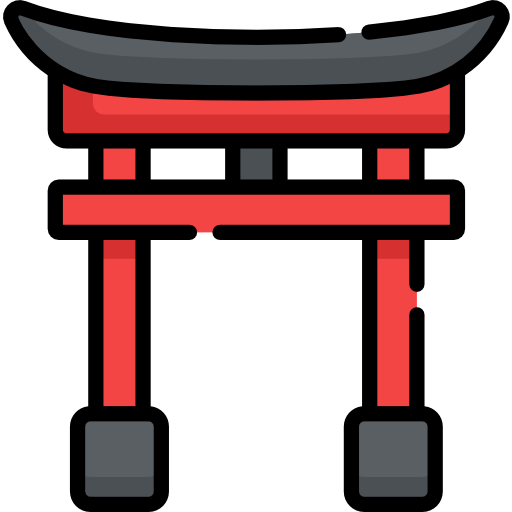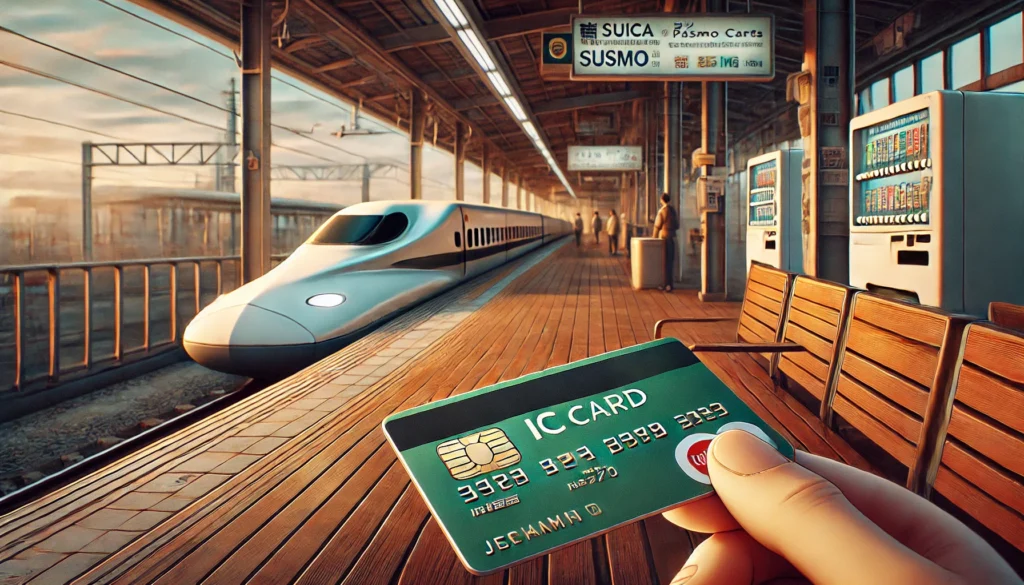Are you planning a trip to Japan and feeling confused about which IC card to get? The “Suica vs Pasmo” debate can leave many travelers scratching their heads, but don’t worry – this comprehensive guide will help you make the perfect choice for your Japanese adventure.
Want to explore Japan’s culture?
Discover Japan’s rich culture, traditions, and hidden gems with our expertly crafted guides. Get insider tips on travel, food, and history. All for free!
What Exactly Are Suica and Pasmo Cards?
Japan’s efficient public transportation system relies heavily on IC (Integrated Circuit) cards, with Suica and Pasmo being the two most prominent options in Tokyo. These prepaid smart cards make navigating Japan’s complex transit networks a breeze, allowing you to:
- Tap in and out of train stations without buying paper tickets
- Ride buses throughout major cities
- Make purchases at convenience stores, vending machines, and many restaurants
- Pay for coin lockers at stations
Both Suica and Pasmo cards store digital money and work on a tap-and-go system, eliminating the hassle of figuring out complex fare charts or fumbling for change. But what makes them different from each other?
Suica vs Pasmo: The Key Differences
When comparing Suica card vs Pasmo, there are several subtle differences worth noting:
| Feature | Suica | Pasmo |
|---|---|---|
| Issuing company | JR East (Japan Railways) | Tokyo Metro & private railways |
| Card design | Penguin mascot | Blue/pink bubble pattern |
| Refund fee | ¥220 (if balance exceeds this amount) | Free |
| Initial charge | Minimum ¥1,500 + ¥500 deposit | Minimum ¥500 + ¥500 deposit |
| Purchase location | JR stations | Private railway & subway stations |
Despite these differences, the most important thing to understand is that both cards function virtually identically throughout Tokyo and most of Japan. You can use either card on all train lines, regardless of which company operates them.
Which is Better: Suica or Pasmo?
The million-yen question: in the Pasmo vs Suica debate, which card reigns supreme? The honest answer is that for most travelers, neither is inherently “better” than the other. Your choice primarily depends on:
1. Your arrival point in Tokyo
If you’re arriving at a JR station (like Tokyo Station from Narita Airport via the Narita Express), getting a Suica is more convenient. If you’re taking the Keisei Skyliner or using Tokyo Metro from the airport, a Pasmo might be easier to obtain.
2. Minimum initial charge preference
If you prefer a lower initial investment, Pasmo’s minimum charge of ¥500 (plus ¥500 deposit) is less than Suica’s ¥1,500 (plus ¥500 deposit).
3. Refund plans
If you plan to get a refund before leaving Japan, Pasmo offers free refunds while Suica charges a ¥220 fee (though this is only deducted if your remaining balance exceeds ¥220).
4. Aesthetic preference
Some travelers simply prefer the cute penguin mascot on the Suica card, while others like Pasmo’s design. It’s a small detail, but when the functional differences are minimal, why not choose based on what makes you smile?
For those wondering about using these cards beyond Tokyo, check out our detailed guide on Can I Use Suica in Osaka?, which explains how these cards work throughout Japan.

Special Tourist Options: Welcome Suica & Pasmo Passport
In recent years, both card providers have introduced special versions for foreign visitors:
Welcome Suica
- No ¥500 deposit required (but non-refundable)
- Valid for 28 days
- Initial charge options from ¥1,000-10,000
- Available at major airports and JR East stations
Pasmo Passport
- Standard ¥500 deposit applies (refundable)
- Valid for 28 days
- Available at major stations and airports
- Initial charge from ¥500
For tech-savvy travelers, digital options are increasingly available. The Welcome Suica Mobile App launched in March 2025, offering even more convenience for international visitors with compatible iPhones.
5 Compelling Reasons to Use an IC Card in Japan
Still wondering if you really need an IC card? Here are five reasons that make either Suica or Pasmo essential for your Japan trip:
1. Seamless Transit Transfers
Using an IC card eliminates the need to purchase separate tickets when transferring between different railway companies. Simply tap in and out at each station, and the correct fare is automatically calculated and deducted.
2. Time-Saving Convenience
No more queuing at ticket machines or trying to decipher fare charts in a rush. With an IC card, you can breeze through ticket gates with a simple tap, saving precious vacation time.
3. Slight Fare Discounts
Both Suica and Pasmo offer small discounts compared to purchasing single-journey tickets. While the savings per trip are modest (typically ¥5-10), they add up over the course of your trip.
4. Shopping Convenience
Beyond transportation, both cards are widely accepted at:
- Convenience stores (7-Eleven, Lawson, FamilyMart)
- Vending machines throughout cities
- Many restaurants, especially those in or near stations
- Department stores and some specialty shops
5. Flexibility for Spontaneous Travel
Changed your mind about your destination? With an IC card, you’re not locked into a specific route. Explore freely and pay only for what you use.
How to Purchase and Use Your Chosen IC Card
Whether you decide on Suica or Pasmo, the purchase process is straightforward:
- Find a ticket machine at any JR station (for Suica) or Tokyo Metro/private railway station (for Pasmo)
- Look for the English button on the touchscreen interface
- Select “Purchase new card” option
- Pay the initial fee (¥500 deposit plus your chosen charge amount)
- Collect your card and receipt
Using your card:
- Tap in by touching your card to the card reader at station gates when entering
- Tap out the same way when exiting at your destination
- For shopping, simply tap your card on the payment terminal at checkout
- Check your balance by looking at the small screen when you tap out, or at any ticket machine
Love Japan? Stay in the Loop!
Get the best of Japan straight to your inbox: language, culture & travel insights!
Practical Tips for IC Card Users
Recharging Your Card
When your balance gets low, recharge at any ticket machine with the Suica or Pasmo logo. Most machines accept both cash and credit cards for recharging.
When Your Trip Ends
Before leaving Japan, you can return your card at a JR ticket office (for Suica) or private railway station office (for Pasmo) to receive your ¥500 deposit and remaining balance, minus any applicable fees.
Lost or Stolen Cards
Unfortunately, unregistered cards cannot be replaced if lost or stolen. If you’re staying in Japan longer or traveling with a significant amount loaded on your card, consider registering it (requires a Japanese address).
Maximum Balance
IC cards can hold up to ¥20,000, more than enough for most travelers’ needs throughout a typical vacation.
Exploring Japan with Your IC Card
Your chosen IC card (whether Suica or Pasmo) will work throughout most of Japan’s major cities, including:
- Tokyo and surrounding areas
- Kyoto and Osaka
- Fukuoka
- Sapporo
- Nagoya
- Yokohama
This makes your IC card an invaluable travel companion even if you plan to explore multiple regions of Japan.
Looking to further prepare for your Japan adventure? Download our free Hiragana & Katakana Cheat Sheet or JLPT N5 Kanji Cheat Sheet to help with basic Japanese reading during your travels!

The Final Verdict: Suica vs Pasmo in 2025
After examining all aspects of the Suica vs Pasmo comparison, the conclusion is clear: both cards offer nearly identical functionality and benefits for travelers. Your choice ultimately comes down to minor conveniences rather than significant functional differences.
If you want the absolute simplest recommendation:
- Choose Suica if you’ll be primarily using JR lines or prefer the penguin mascot
- Choose Pasmo if you’ll be mainly using Tokyo Metro or prefer the lower minimum initial charge
Either way, you’ll enjoy the same seamless travel experience throughout your Japanese adventure!
Frequently Asked Questions
Is Suica better than Pasmo?
No, neither is objectively better. Both Suica and Pasmo offer virtually identical functionality throughout Japan’s transportation networks and for shopping. The differences are primarily cosmetic and relate to the issuing companies.
Can I use Pasmo and Suica interchangeably?
Yes, both Pasmo and Suica cards work on all trains, buses, and at all merchants that accept IC payments, regardless of which company issued the card.
How much should I charge on my Suica or Pasmo card?
For a typical day of sightseeing in Tokyo, ¥1,500-2,000 is usually sufficient. Consider your daily travel plans and add more if you’ll be making longer journeys or using the card for shopping.
Can I get a refund for my unused balance?
Yes, you can return your card at designated stations to receive your deposit and remaining balance, minus any applicable fees. Suica charges a ¥220 fee (if your balance exceeds this amount), while Pasmo offers free refunds.
Do Suica and Pasmo cards expire?
Regular Suica and Pasmo cards do not expire, but the tourist versions (Welcome Suica and Pasmo Passport) are valid for 28 days. The digital Welcome Suica offers extended validity of 180 days.
Can I share my IC card with family members?
Yes, standard IC cards are not personalized (unless registered), so multiple travelers can share a single card. However, only one person can use the card at any given time.
By keeping this guide handy during your travels in Japan, you’ll navigate the transportation system like a pro, regardless of whether you choose Suica or Pasmo!
Join Fellow Japan Enthousiasts!
Ask questions, get study tips, and take part in weekly challenges. Join a community of motivated learners exploring both the language and culture of Japan!




